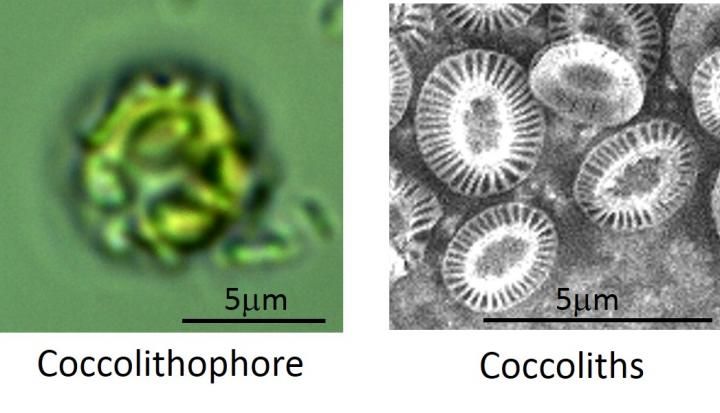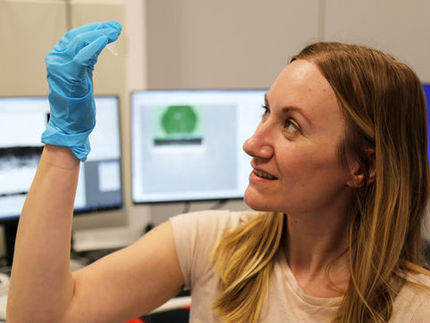Potential of disk-shaped small structures, coccoliths
Advertisement
Researchers at Hiroshima University and the University of Tsukuba showed that coccolith disks made of calcium carbonate in Emiliania huxleyi, one of the promising biomass resources, potentially perform roles in reducing and enhancing the light that enters the cell by light scattering. Elucidation of the physiological significance of coccolith formation in E. huxleyi can help promote efficient bioenergy production using microalgae.

Coccolithophore phytoplankton Emiliania huxleyi and cells covering crystals of calcium carbonate - coccoliths. The coccoliths are 2-3 m in diameter
Hiroshima University
Coccoliths are disk-shaped plates of calcium carbonate formed by coccolithophores, which are single-celled algae such as E. huxleyi. The most important question concerning coccolith function is with regard to how they modulate solar light in the ocean.
Professor Masakazu Iwasaka at Hiroshima University and Professor Yoshihiro Shiraiwa at the University of Tsukuba prepared an aqueous suspension of isolated coccoliths of Emiliania cells and examined their light-scattering properties. They found that the coccoliths showed magnetic orientation when floating in water, and the light scattering was changed by the magnetically oriented coccoliths.
Professor Iwasaka said, "Surprisingly, the percentage of coccoliths oriented in the same direction increased during exposure to the 400 mT to 500 mT magnetic field." "In addition, an individual coccolith has a specific direction of light-scattering," Professor Iwasaka explained.
These results can contribute to the understanding of how coccoliths control light and utilize optical energy for the photosynthesis in E. huxleyi. Furthermore, since no artificial method to reproduce precise structures such as a coccolith without a coccolithophore exists so far, these coccoliths can be used as novel micro/nano optical devices owing to their ability to modify light.

























































